When chef Alan Bergo talks about foraging, he sounds like a Tough Mudder competitor waxing rhapsodic about the best obstacles.
“When you first see a patch of plants or mushrooms that are perfect for harvesting, there’s a little thrill, and you’re happy to be out there in the rain, tromping through the mud to get your prize,” he says. “It becomes like a sport, and it’s easy to get hooked.”
Bergo began foraging nearly a decade ago, and every year he expands his wild picks. Although these plants don’t make up a majority of his diet, he recommends foraging as a way to sample new flavors, access a wider array of nutrients, and simply have fun.
“You don’t need to go out on some remote hike to find wild plants to eat,” he notes. “Sometimes, all you need to do is look down.”
Awaken the Past
Most of our ancestors relied on wild plants for a major part of their nutrition and medicine, according to Kenton Whitman, cofounder of ReWild University, a Hawaii-based wilderness-skills program. (For more on rewilding, visit “A Walk on the Wild Side”.)
“Not only are wild plants a dependable food source, but they also provide a stunning array of nutrients, minerals, antioxidants, fats, and protein,” he explains. “They can provide us with nutrition that is missing in our modern diets, while connecting us with nature and giving us all the physical, mental, and emotional benefits that reconnection brings.”
They also offer a link to our hunter-gatherer past, he adds. There’s an ancestral legacy that comes with quietly trekking through a wild space, looking for sustenance — even if it’s just a few greens to throw on your next salad.
Start Simply
The variety of plants you can forage for is almost overwhelming, and the selection will vary depending on your locale. Foraging at the base of a Hawaiian volcano is a whole different adventure than looking for edible options near a northern Minnesota lake. Yet the skillset is the same, says Whitman.
“If you are a forager, it doesn’t matter if you’re in the tropics, the tundra, the desert, or the forest,” he explains. “There are plant foods available for free that will seriously enhance your meals.”
These wild plants are found throughout most of the country.
Dandelion
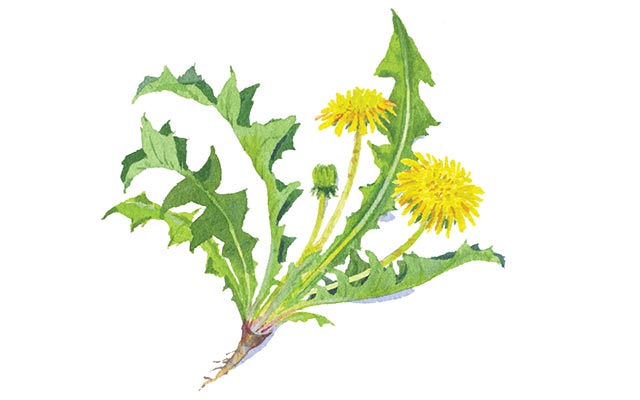
Sadly considered a scourge by lawn-loving homeowners everywhere, the dandelion is rich in beta-carotene, vitamin C, and numerous minerals. It boasts more protein than spinach and has been used for thousands of years to treat anemia, depression, skin issues, and scurvy.
Every part of the plant is edible, so you can pick leaves, blooms, stems, and even roots. They tend to have a bitter flavor in midsummer, so they’re best harvested in spring or fall. Dandelion greens are delicious when lightly braised with butter or added raw to a salad. The leaves and roots can be dried and made into tea, which is often used as a diuretic or detox brew.
Nettles

Sometimes called stinging nettles, these plants flourish in both urban and rural settings. Wear gloves when harvesting and pick in May or June before the flowers appear.
Brew both the fresh and dried leaves into a tea to help combat spring allergies. Before adding to culinary dishes, steam the leaves briefly and include with other spring greens.
Lamb’s Quarters

We tend to ignore these plants because they’re so abundant and look “weedy.” But this relative of spinach and beets is packed with vitamins and minerals and has often been used to address digestive issues.
Use the leaves in the same way you would spinach. Throw them raw into salads or lightly sauté the greens for a few seconds. The plant has an earthy taste, similar to collards, but with a slightly lemony undertone.
Echinacea
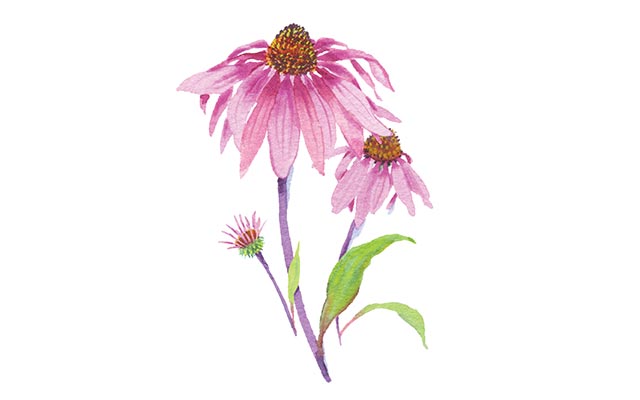
This pretty coneflower has become a kind of cure-all herb, fighting infections, reducing pain and inflammation, and acting as an antioxidant. Echinacea is an ideal addition to a planted foraging space because it’s easy to maintain, tolerates droughts fairly effectively, and regenerates quickly. Plus, it’s a hit with local pollinators.
Use the leaves and flower petals dried for tea. You can also use the roots, but wait to harvest them until late fall, when the plants have withered. This will cause the plant to divert its energy into the roots for winter storage, increasing their potency. Dry the roots in a cool, well-ventilated area until they snap like twigs. After that, steep them in hot water for tea.
Burdock
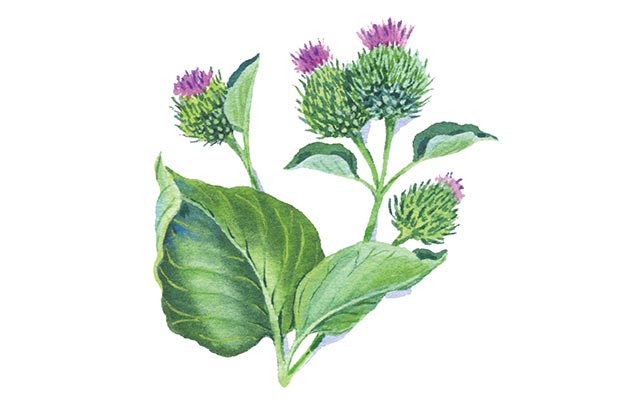
Known for its anti-inflammatory and antibacterial properties, burdock also contains some powerful antioxidants. Once you identify the plant, you’ll see it everywhere. The stout, common weed has enormous leaves and stems when mature, and it can sport purple flowers that bloom between June and October.
Avoid the especially large burdock and concentrate instead on the smaller, younger plants that are less bitter. You’ll be using the stalk, so discard the leaves. Peel the stalk and then boil it for about 20 minutes. If you’re a fan of bitter foods, you can try steaming the leaves and serving them with other wild greens.
Tips for Foraging
Foraging for the first time can be intimidating (What if I’m about to eat poison ivy?), but there are many ways to ease into the adventure.
1) Take a class or go with a guide.
There are field guides, experts, classes, and weekend workshops in most parts of the country. Not only will you learn what to forage safely, you’ll also connect with fellow wild enthusiasts, Whitman says.
2) Avoid sprayed areas.
Urban parks can offer a wealth of choices for foraging, but be sure to double-check that you’re looking in an area that hasn’t been sprayed with pesticides and herbicides. Bergo recommends avoiding places that look manicured — like the fringes of a golf course or a friend’s pristine yard.
3) Plant your own hunting ground.
Although this eliminates the thrill of the hunt, it’s a good way to make sure you have an ample supply of your favorite wild things. You can also ensure they’ve been grown without pesticides. For example, Bergo recommends buying ramps (wild leeks) from your local food co-op — ideally with roots attached — and planting them in a shady spot in your garden for harvesting later. Harvest only a few leaves during the first seasons to avoid killing the plant before it can produce seeds. He also notes that lamb’s quarters and nettles, when planted, could produce multiple generations of plants in a single year.
4) Forage only as much as you’ll reasonably eat.
Foragers are often told they shouldn’t harvest all the plants or mushrooms in an area because they’ll eliminate further growth. That’s a myth, says Bergo — especially regarding mushrooms. With many species of plants, harvesting actually spurs more growth, just like cutting back herbs in a garden (with the exception of digging things out of the ground, which kills the plant). That said, don’t harvest as if you’re a commercial enterprise. Pick only what you’ll eat, and you’ll likely leave plenty for others.
Most of all, try to view foraging as an exciting way to expand your food selection, connect with nature, find new community, learn a ton, and give yourself the gift of going a little wild.
Recipes
Wild Green Cakes
Delicious, wholesome, incredibly versatile, and great for literally any meal of the day — these are nothing more than little green burgers made from blanched or lightly cooked, wilted greens. Many different species of plants can be used, and no two batches I’ve ever made have been exactly the same. If you start out with fresh greens, blanch a little over 1 pound of greens in boiling salted water, then shock in cold water. Children, adults, ovo-vegetarians, picky eaters, and hardcore carnivores — everyone loves these.
Yields roughly 10 cakes
Ingredients
- 4 cups (1 lb.) cooked or frozen greens, preferably wild, or use chard or spinach
- 2 large eggs
- Kosher salt, to taste
- Cooking oil, such as lard or grapeseed oil, as needed for cooking the cakes
- ¼ cup flour, or a flour equivalent
- A few scrapes of fresh nutmeg (optional)
- Wedges of fresh lemon, or your favorite dip, like tahini or flavored mayonnaise, for serving (optional)
Method
Squeeze any water out of the greens. Chop the greens medium-fine and mix with the eggs and flour. Season the mixture with salt to taste — it should be well seasoned. Ideally, you’ll now let the batter rest for 30 minutes or so before cooking, but it can be cooked straightaway if needed. Shape ¼ cup-size cakes (2 ounces) with your hands, then fry on medium-high heat in a well-oiled pan until browned on both sides. It’s important to allow the cakes to brown to help them set. Serve immediately, or at room temperature.
Variations
- The nutmeg is traditional here, but other spices, especially carrot family seeds like cumin, ground or green coriander, and caraway are really good in its place, especially ground cumin.
- Play around with combinations of bitter and “sweet” greens; horseradish greens can be unpalatable for some people, but when mixed 25 percent with other greens, no one will notice.
- The mix of greens and binder is basically a meat substitute. After the green cakes are cooked, you can use them in a lot of places you’d normally use a meat patty, or ground meat.
- You’re not limited to patties and balls — play around with forms. Making a ball with an indent in it like the chocoyones will help the mixture cook faster, and the indent will help hold a sauce, as gnocchi does, or make them great for soup.
Kinpira Gobo
Arguably the most famous dish made with burdock, kinpira is a classic you’ll often find at sushi restaurants. Gently sweet, crisp, salty, and nutty, kinpira is loved by everyone I’ve served it to, and it’s even better as a cold salad the next day. I prefer to purchase gobo burdock (Arctium lappa) from Asian markets since it’s cheap, evenly sized, and easy to clean. But if you’re adventurous, you can forage common wild burdock (Arctium minus), which has a smaller, more gnarled root that will test your patience and arm strength. Both species of burdock can be used interchangeably.
Serves four as a side
Ingredients
- ½ lb. gobo root (1 large)
- ½ lb. carrot (1 large)
- 1 tbs. maple syrup or sugar
- 2 tbs. soy sauce
- 2 tsp. toasted sesame seeds, to garnish
- 1 tsp. fish sauce, such as Red Boat brand
- 1 cup water
- 1 tbs. cooking oil
- 1 tbs. toasted sesame oil
Method
- Have a bowl of cold water ready. Trim the ends off the gobo, then cut into manageable lengths, about 6 inches long.
- Peel the lengths one at a time, then cut on the diagonal into ¼-inch-thick long ovals.
- Stack the ovals on each other a few at a time, then cut into ¼ inch match sticks. Repeat with the rest of the gobo, putting the cut sticks into the water as you go.
- Repeat the process with the carrots, reserving them separate from the gobo (they don’t need to sit in water).
- In a 10-inch pan, such as cast iron, or wide skillet, bring the gobo and 1 cup of water to a boil and cook for five minutes. Pour off the water.
- Add the oil to the pan, and the carrots, and sweat for five minutes, stirring occasionally.
- Add the maple syrup, soy sauce, vinegar, and the remaining ½ cup of water, and cook rapidly on high heat, until the pan is nearly dry.
- Turn off the heat, stir in the sesame oil, transfer to a serving bowl, garnish with the sesame seeds, and serve warm, cool, or at room temperature.
Wild Greens With Garlic and Chili
Known as “erbe selvatiche en padella,” this is one of the quintessential Italian preparations for foraged greens. The key is how the garlic is cooked: sliced, never minced or chopped. Nothing compares to the flavor that slices of garlic slow-cooked in oil lend to a simple bowl of cooked wild plants. Each different blend of plants creates a different dish.
Serves two to four as a side dish
Ingredients
- 8 oz. wild greens, such as nettles, dandelions, or lambs-quarters
- Kosher salt, to taste
- 2 tbs. extra-virgin olive oil, plus more to taste
- 1 large clove (8 grams) garlic
- Fresh lemon wedges, for serving
- Crushed red-pepper flakes, to taste
Method
- First blanch the greens in boiling salted water until they’re just tender and taste good to you, then refresh in cold water and squeeze dry. If using wild greens, this could take 10 to 15 minutes. Fresh, cultivated greens may take seconds. If the greens are very long, consider chopped them coarsely so they can fit on a spoon.
- Slice the garlic as thin as you can with a knife or mandoline, then heat in a 8-inch pan with the oil until the garlic is lightly browned and aromatic, about four to five minutes on medium-low heat.
- Add a pinch of crushed red-pepper flakes and the greens, then stir to heat through and coat with the garlic and oil. Taste the greens — they should taste pleasantly seasoned with salt, and scented lightly with garlic.
- Heat the greens until hot throughout, taste again and adjust the seasoning, then serve with lemon on the side, and extra olive oil if you like.
This article originally appeared as “Time to Forge.”

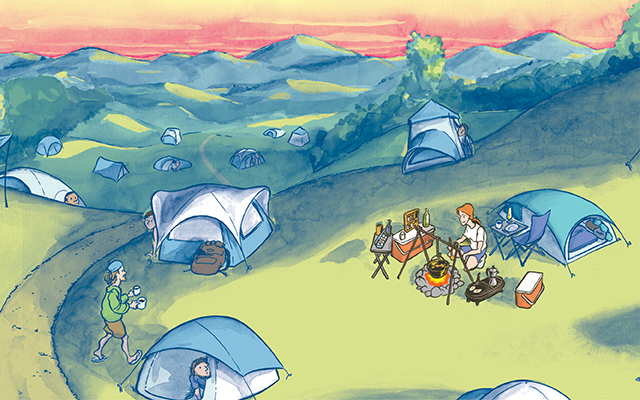
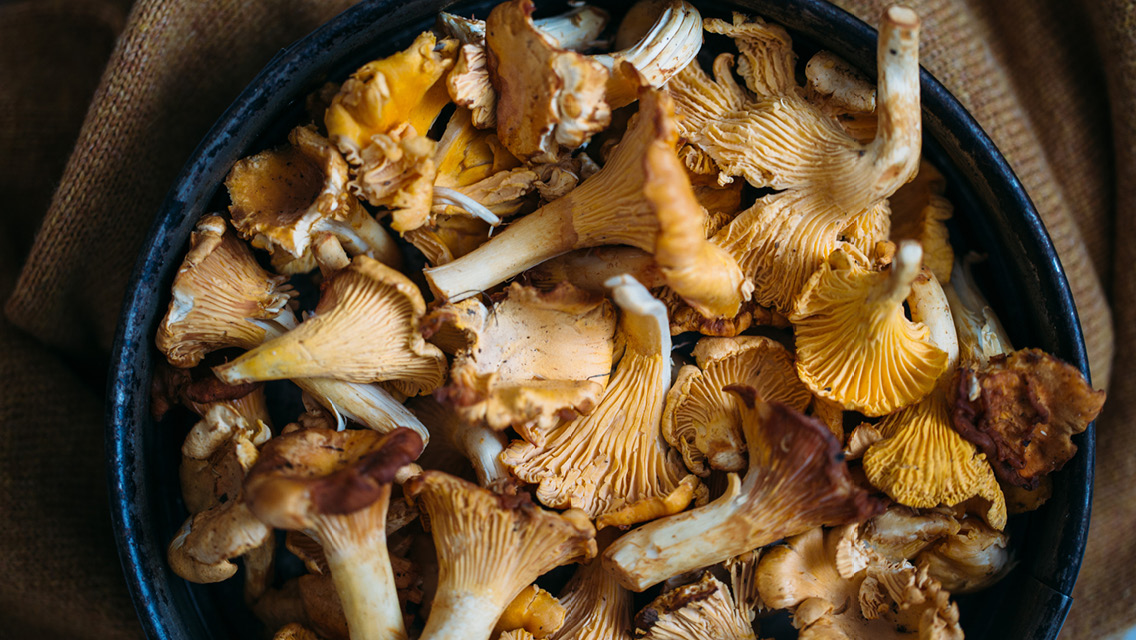

This Post Has 0 Comments